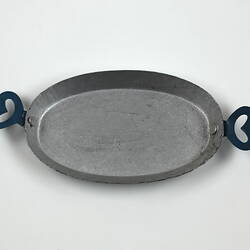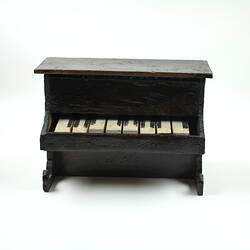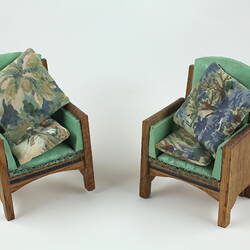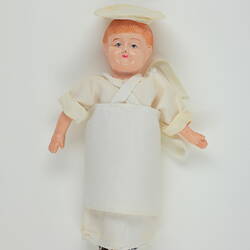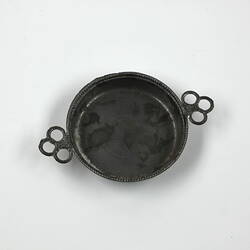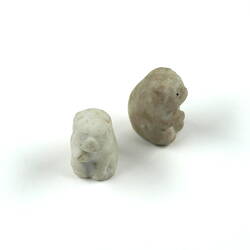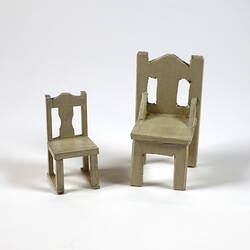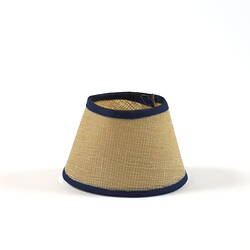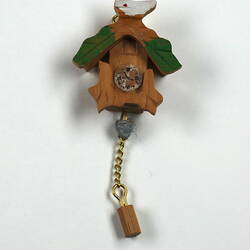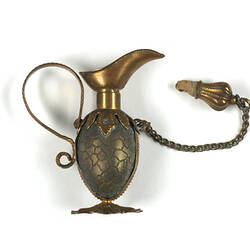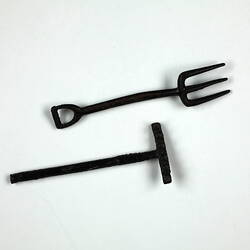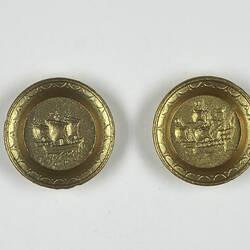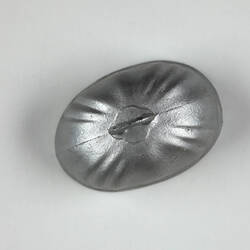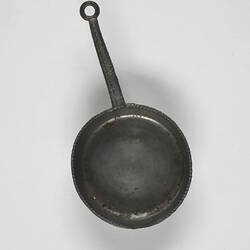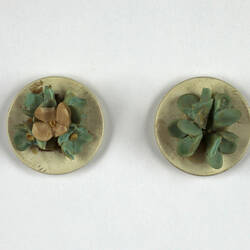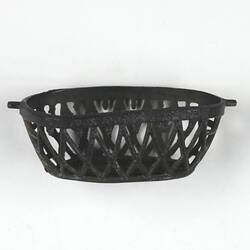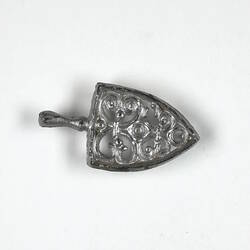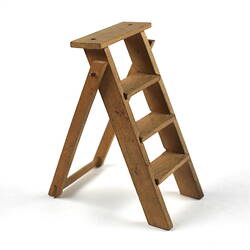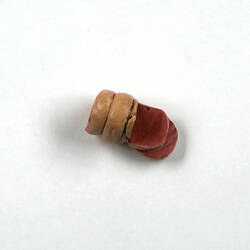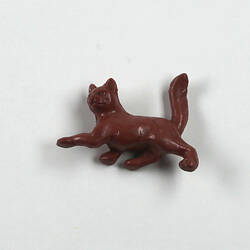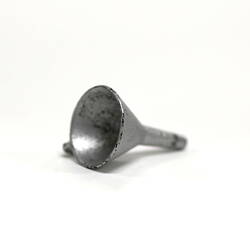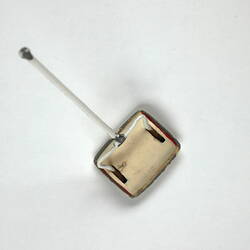Some of the toys in the doll's house may date from the 19th century (played with by Lillian in the 1870s-early 1880s or even earlier by her mother Charlotte Twycross, nee Burrell, 1834-1908). Note that other relatives associated with the family were girls in the 19th or early 20th century, including Neil's sister Ruby (1888-1960), his mother Grace, nee Landy (1856-1914) and her sister Ellen (1856-1919).
The majority of the doll's house contents, however, date to either the 1920s or 1940s-50s. In the early 1950s the donor, Liz Fletcher, nee Butler was given the 'spruced-up' doll's house as a surprise birthday present. Her father, Vic Butler, had made 'home improvements' such as a new sink and wiring for the house, connected to tiny light switches. Her mother, Beth, added furnishings such as a cushion and chaise longue cover made from old curtain material, and re-dressed some of the dolls. The donor herself re-dressed one doll in a Quaker outfit she made for a school project, perhaps in Year 7, around 1960. A few items were added by the donor's daughter, such as a coat rack and plastic sewing machine, although she wasn't allowed to play with the doll's house due to its fragility. The donor has recently allowed her young grandchildren to play under close supervision.
Liz grew up in Severn Street, North Balwyn. The area still had paddocks and other open spaces where the local children played. Most of them were boys, including Liz's only sibling, Ian, and she used her doll's house as a special place for 'female', solitary play. She knew the doll's house was fragile, and forbade local boys from touching it. Liz remembers thinking the doll's house was 'finer' than her own home, larger and even incorporating servants. She doesn't recall the names of particular dolls, but does remember role-play, for instance with 'father' and 'mother'. She has an early memory of what would have been her first day of school, aged four and a half. Her mother took her to school, but they refused to let her start as she was too young (by only months). She went home in tears, and sought solace by playing with the doll's house.
References:
Deborah Tout-Smith, curatorial communication with donor, 2016-2018
'Holcomb House' [for sale], Classified Advertising (1925, January 10). The Argus (Melbourne, Vic. : 1848 - 1957), p. 3. Retrieved February 16, 2018, from http://nla.gov.au/nla.news-article2023793
More Information
-
Keywords
-
Localities
-
Authors
-
Article types

